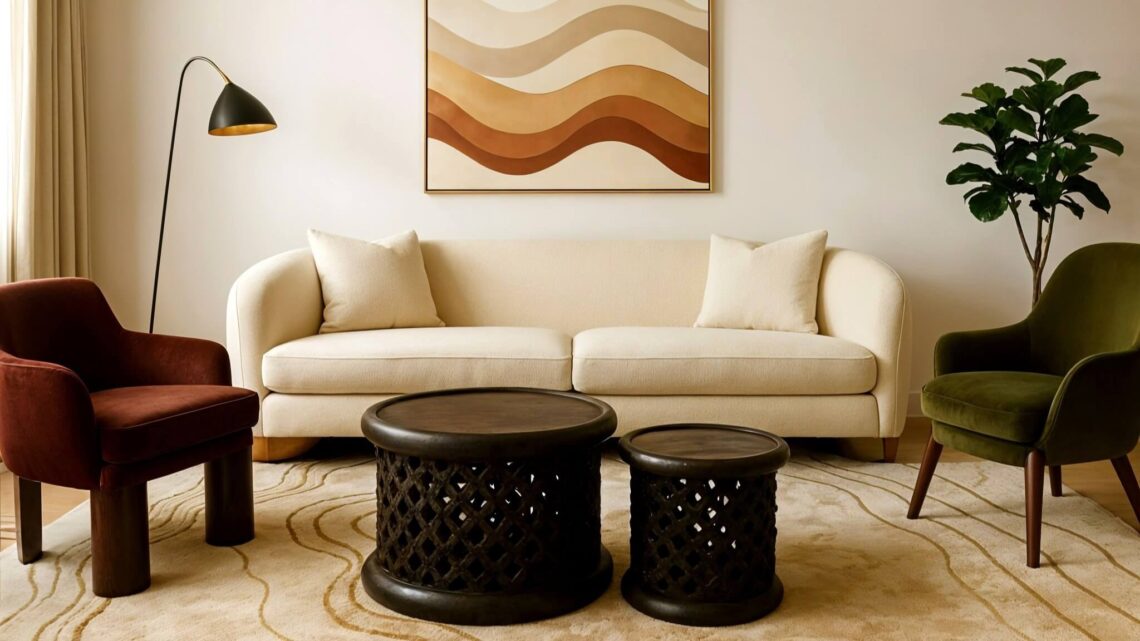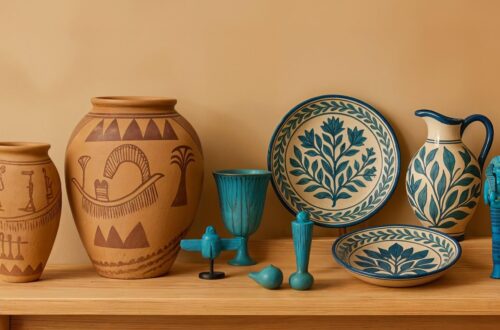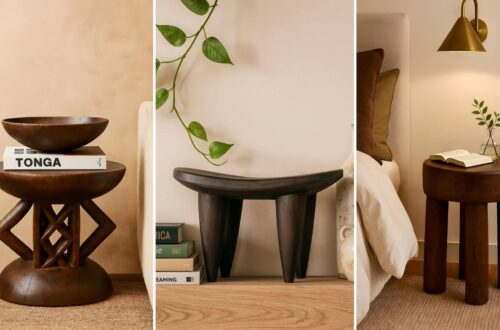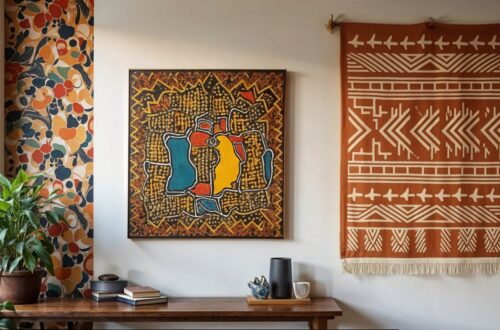A Bamileke Stool never tries too hard to impress. It doesn’t need to. One look at those sculpted legs and you sense this is no ordinary seat. Once reserved for fons — spiritual and political pillars of Bamileke chiefdoms in Cameroon — it now settles easily into modern homes, balancing history and daily life with confidence.
Where the Bamileke Stool Began
African seats hold serious sculptural power. Among them, the Bamileke Stool stands out, carved by the Bamileke people of Cameroon’s West Region. These communities are carefully organized into chiefdoms led by a fon — a figure who carries spiritual, political, and judicial weight. No surprise then, that sitting mattered here.
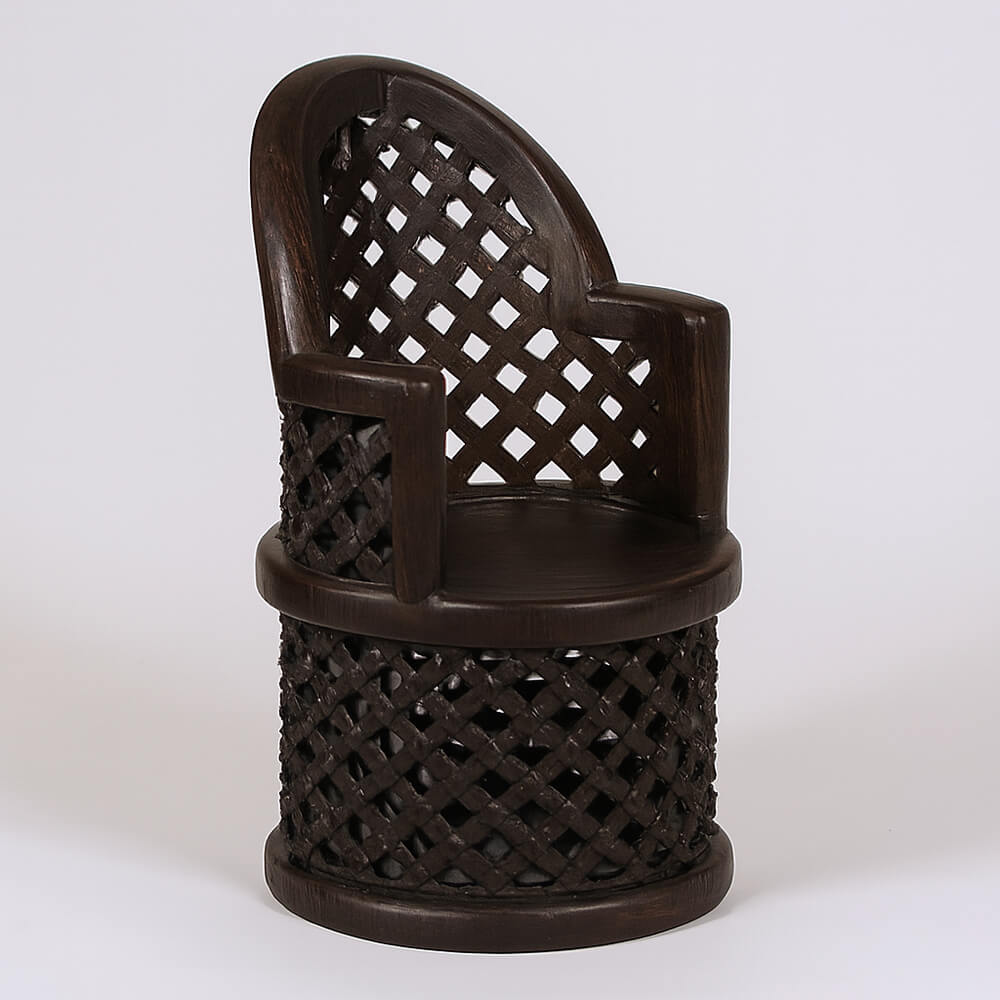
A fon would perch on an imposing throne or sometimes on a grand stool during gatherings and important ceremonies. These stools were, and still are, made by the Bamum — a royal group part of the Bamileke kingdom and known for their carving mastery. The best-known version is the “Spider Stool,” but buffalo, leopard, and elephant motifs also exist.
You May Also Like: The Mighty Ashanti Stool | Make Your Home Fit for Royalty
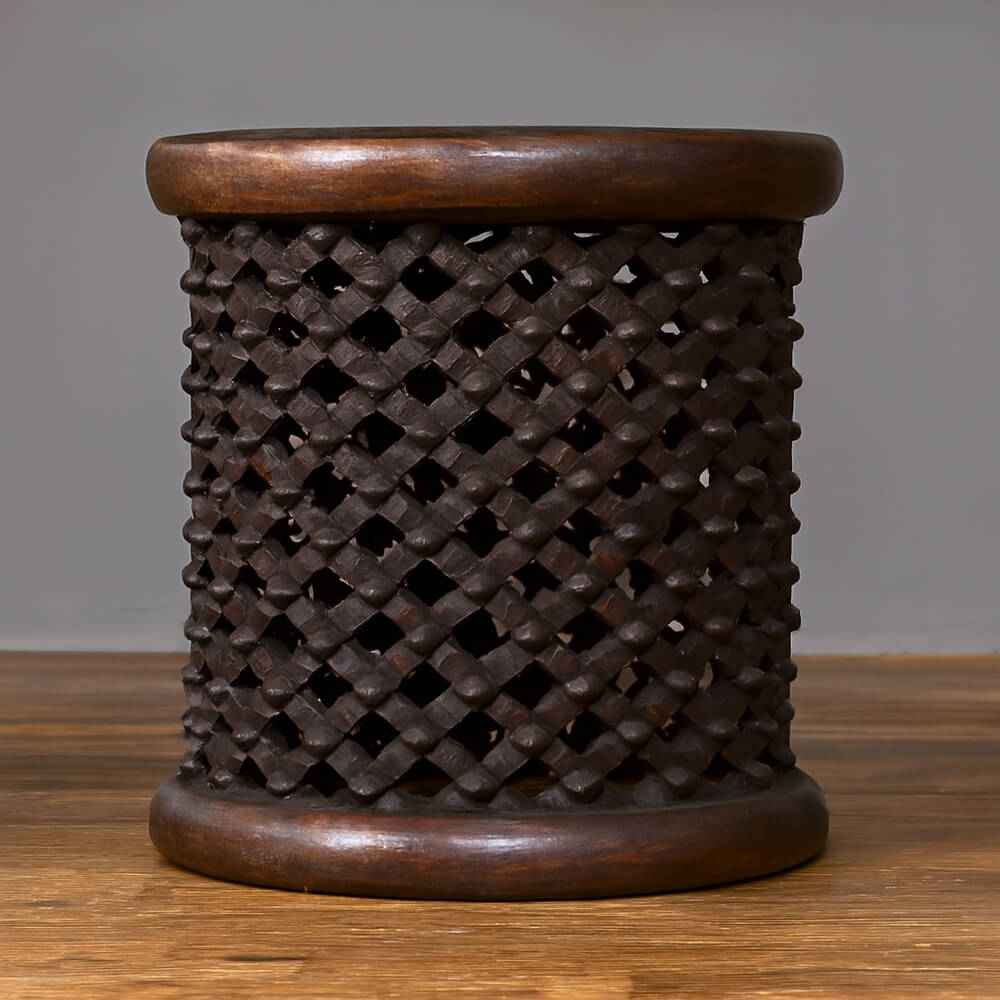
Unlike the regal leopards or sacred buffalo seats, the spider version fits daily life. Still majestic, but approachable enough to move around and use for ordinary tasks. The spider design isn’t random either — it’s a nod to the creature’s role as a connector between our world and the one beyond. That link makes the Bamileke Stool a spiritual bridge.
How Bamileke Stools Are Made
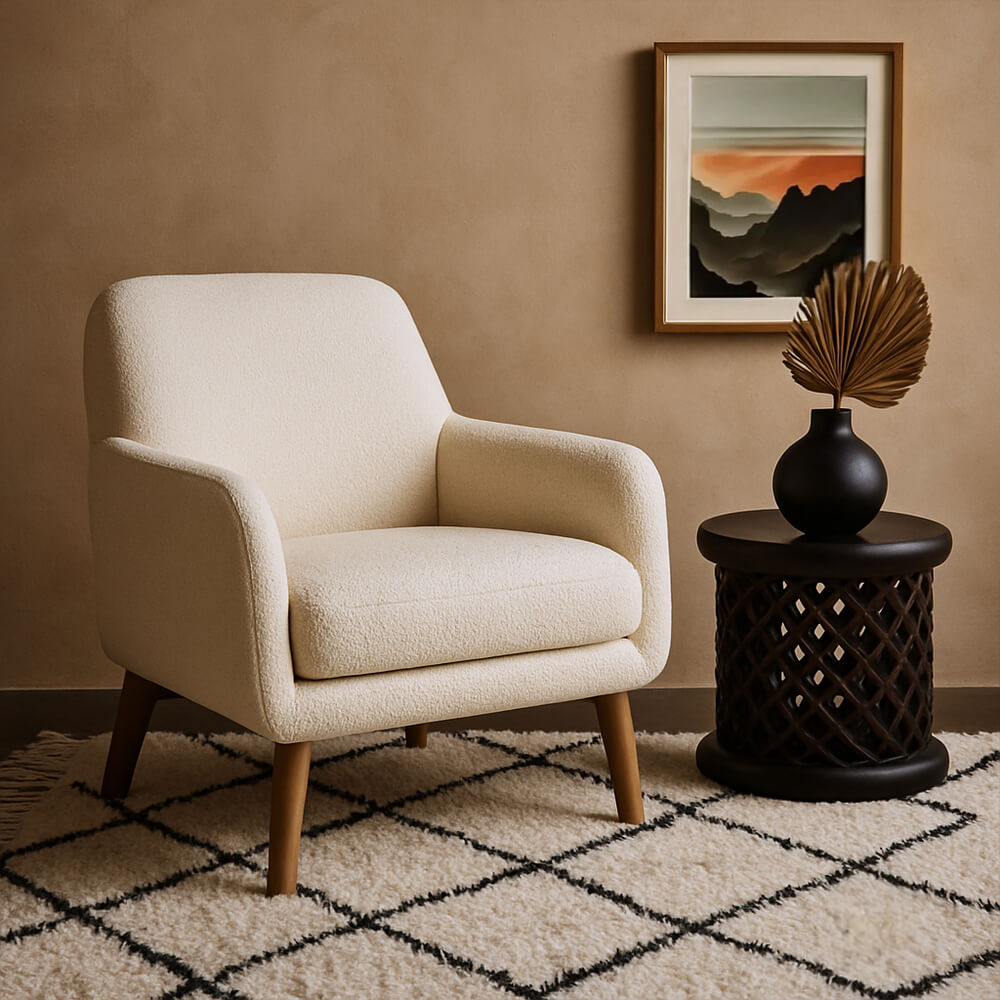
Each stool starts as a single block of hardwood. No machinery hums here — just patient hands and simple tools, transforming raw wood into a lattice of graceful legs and circular tops.
It might take a week to complete one, depending on its size. That care explains why, centuries later, the Bamileke Stool still travels across continents and ends up in modern living rooms.
The Bamileke Stool at Home
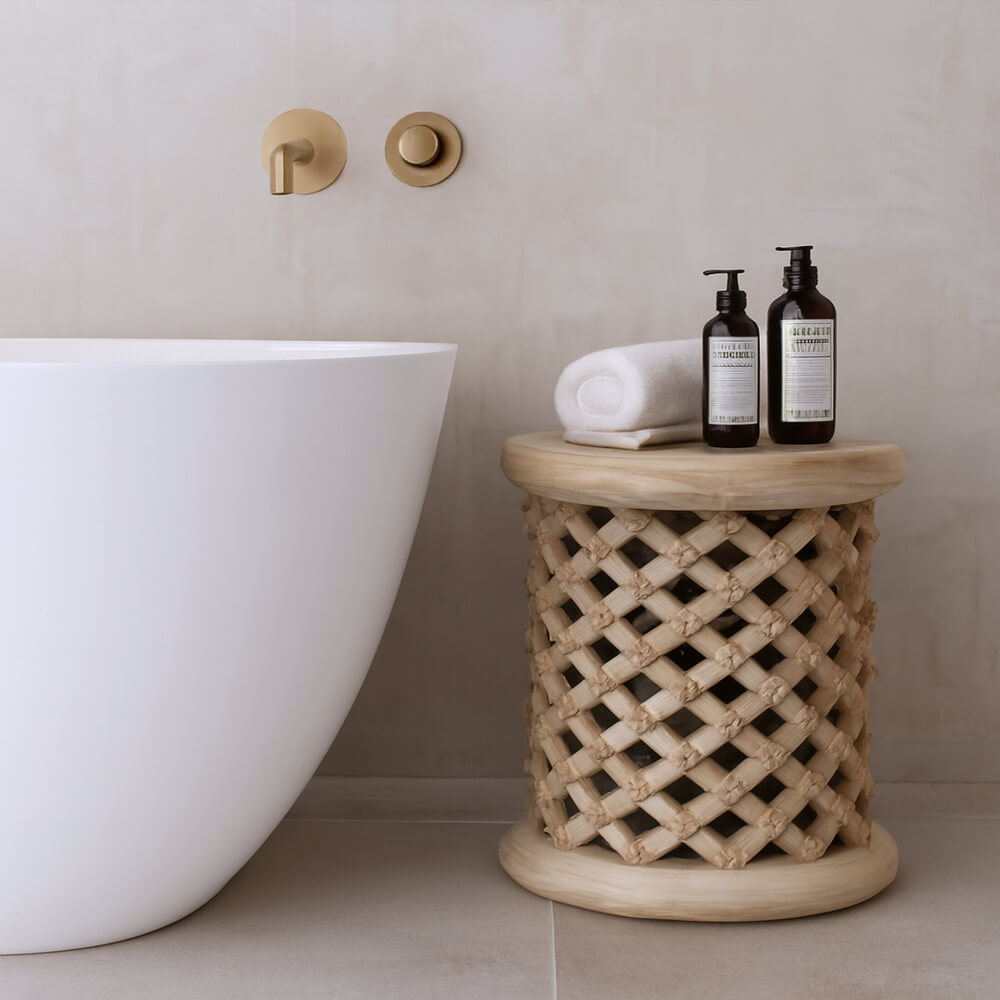
The Bamileke Stool slips easily into daily life. Mine moves around my living room depending on the day — sometimes it’s a side table, other times it’s where my favorite books pile up.
You May Also Like: The Remarkable Rise of Senufo Stools in Global Interiors
Thanks to its sturdy build, it doubles as a spare seat when guests drop by. It can handle the backyard too — these stools shrug off a bit of moisture like seasoned warriors. And for those who love a coffee table that sparks conversation, the Spider Stool version does that in seconds.
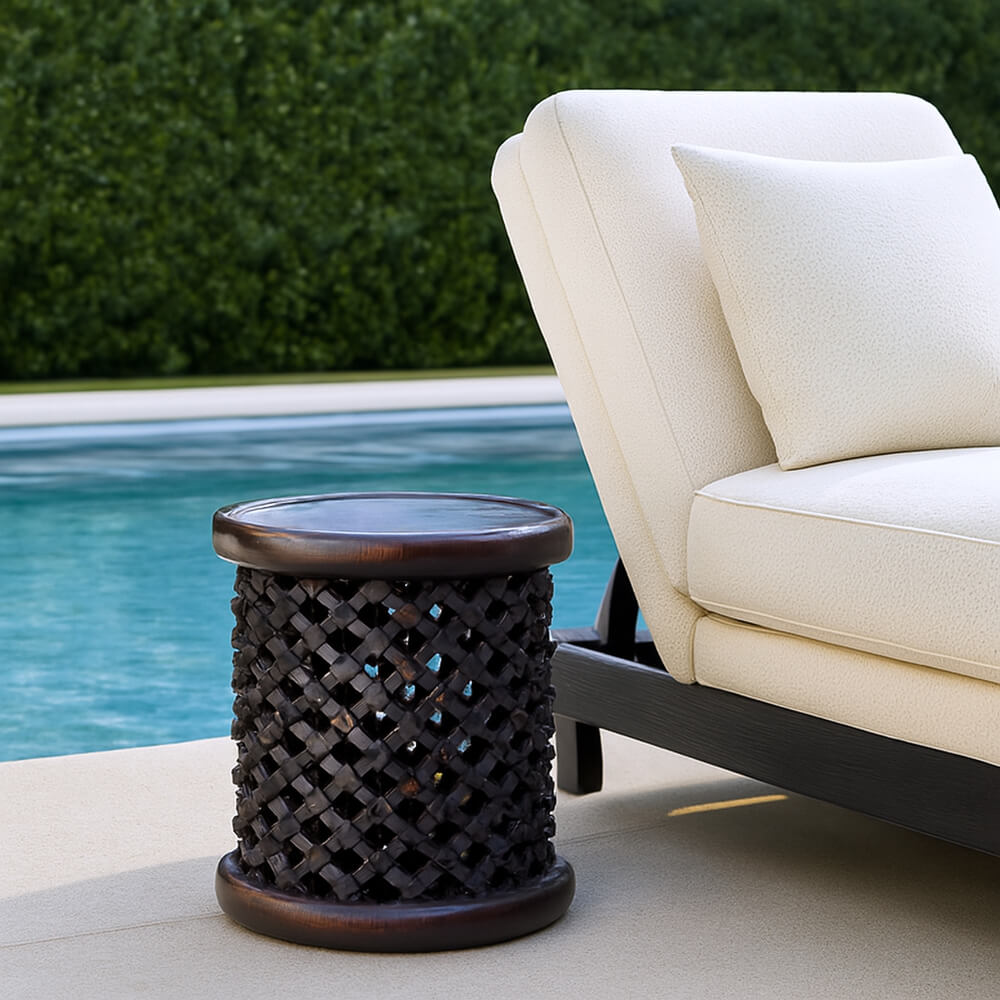
Why the Bamileke Stool Still Matters
The Bamileke Stool doesn’t fade into the background. It carries centuries of Bamileke chiefdom pride in its rings and cuts. It sits quietly, yes, but it hums with all the talk that’s come before — gatherings under thatched roofs, fons in deep thought, carvers shaping spider legs by firelight.
Bring one home and you get a bit of that. And your keys finally have a royal throne too.
Liked this article? Continue with African Bronze Art | From Ancient Kingdoms to Modern Homes

